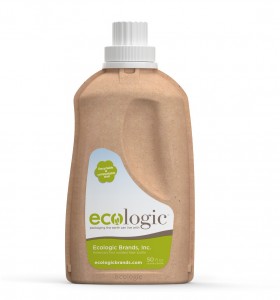Countertops made from recycled glass.
Preventative healthcare for $3 per month.
Giving a pair of shoes away for every pair sold.
Welcome to the social innovation business; organizations committed to profit and doing good. This fresh new expression of capitalism is not a corporate social responsibility program with dubious motives. IceStone, SevaMob and the well-known Tom’s are three brands of many where the impact mission is tightly woven into the both corporate identity and revenue model. (I’ll explore them more below.)
The business models of the social economy balance two goals: create measurable social value providing investments for the social good, and good ol’ fashioned revenue growth. They typically focus on a clearly defined social mission, implemented alongside a methodical strategy. While some industries like technology, education and retail provide an ideal environment for social innovation investments, a well-developed social innovation business model can create a profitable and sustainable business in almost any industry, however competitive.
The social innovation business is really two organizations rolled into one. a social welfare model guides its mission in sustainability, education or another social good, and a revenue generation model that drives its commercial operations. The joint missions can be intertwined, as with EcoLogic below, or live side-by-side. Welcome to a new breed of startup led by social entrepreneurs that apply innovative, performance-driven management practices to solving societal problems.
Here are a few inspiring examples:
You could say IceStone is a countertop company and a recycling company. Fabricating a building material from recycled glass is a challenge from a design and material perspective, but also adds cost to the product.  Icestone’s model accounts for these costs by leveraging LEED building requirements; requirements that serve an environmental sustainability mission. IceStone strengthens its brand by also being a B Corp, making a strong commitment to recycling, and cleaning the water used in its manufacturing process.
Icestone’s model accounts for these costs by leveraging LEED building requirements; requirements that serve an environmental sustainability mission. IceStone strengthens its brand by also being a B Corp, making a strong commitment to recycling, and cleaning the water used in its manufacturing process.
SevaMob is a special kind of tech startup. Beginning with a deep understanding of the healthcare needs of the rural poor in India, SevaMob created a distribution system for low-cost preventive health services. Fees of $3 a month sound like pure fantasy, but are possible by providing health checkups from homeopathic and ayurvedic professionals rather than MD’s. SevaMob understands serving the most neediest among us requires a different provider model.
 The manufacturing innovator EcoLogic creates recycled paper/plastic hybrid bottles for brands Seventh Generation, Purina and more. Ecologic allows the consumer product industry to do good and connect with socially conscious customers without investing in new technology. And their product reduces plastic waste at time when low oil prices make plastic packaging cheaper than ever.
The manufacturing innovator EcoLogic creates recycled paper/plastic hybrid bottles for brands Seventh Generation, Purina and more. Ecologic allows the consumer product industry to do good and connect with socially conscious customers without investing in new technology. And their product reduces plastic waste at time when low oil prices make plastic packaging cheaper than ever.
Many feel TOMS Shoes is the mother of buy-one-give-one. The ubiquitous clothing brand is big enough to have created legions of fans and haters of the concept, but at the end of the day TOMS has given away over 35 million pairs of shoes to the poor all over the world, and it’s crystal-clear social mission continues to inspire.
For many entrepreneurs and business owners, the social innovation business model offers a promising vehicle for the creation of both social and economic value. When I look at the growth of impact investing and other innovative funding sources I see an industry gaining momentum and growing roots. I see the development of strong networks across multiple disciplines, and traditional industries directing resources into social good.
While there will undoubtedly be a bump or two in the road forward, there are plenty of reasons for optimism. The Etsy IPO is the latest success story, this one for the maker movement, B Corps, and venture capital markets. Doing good in the free market framework is here to stay.
Continued Reading: Investing in Social Innovation from the Kennedy School of Government at Harvard.
With 7 comments | Categories: Featured , San Francisco Bay Area News , Social Good Marketing
Share
Comments:






Really no matter if someone doesn’t understand afterward its
up to other users that they will assist, so here it happens.
Excellent post. I was checking continuously this blog and I’m impressed!
Extremely useful information particularly the last part :
) I care for such information a lot. I was seeking this certain info for a very long time.
Thank you and best of luck.
Thanks
Thanks
Enjoyable read 🙂
Another good post
Enjoyed the read